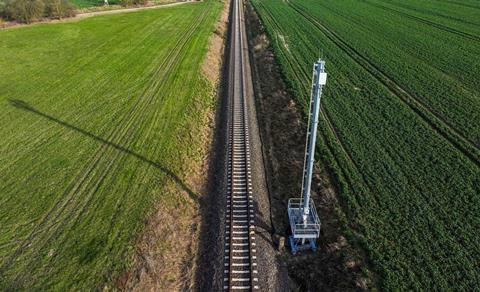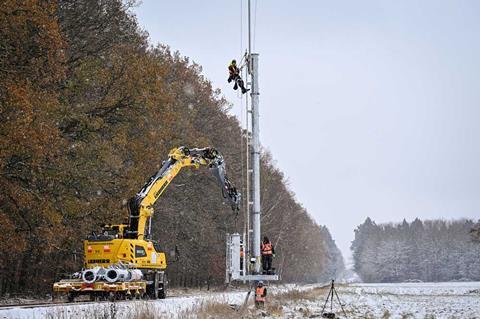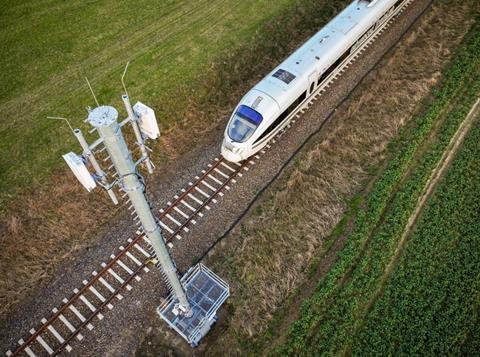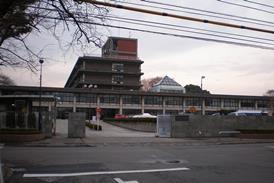Interview with Nicolas Segond, Head of Railways, Market Area Europe and Latin America, at Ericsson.

Railway Gazette: 5G for railways is one of the hot topics at InnoTrans 2024. Ericsson is involved in several key projects in this field, including the Gigabit Innovation Track (GINT) in Germany and ADIF’s 5G Corridors programme in Spain. Why are these so significant in the context of deploying 5G telecoms within railway infrastructure?
Nicolas Segond: Sure. Ericsson is engaged to empower Railways with 5G communications systems that will benefit both for rail operations, through FRMCS standard 5G based, and train connectivity, through 5G corridors. For FRMCS, we are deeply involved in the coming EU pilot program for standard validation prior to rollout projects. In the meantime, the GINT project with partners like Deutsche Bahn, O2/Telefónica and Vantage Towers and ADIF with MasOrange and Vodafone are pioneering initiatives to deploy advanced 5G technology into railway infrastructure. These projects are significant because they aim, first to meet passenger expectations for a fully connected travel creating 5G coverage corridors along the track, while also contributing to the digital transformation of railways. Providing these 5G corridors on the rail grid, we can ensure seamless communication, real-time monitoring, and enable enhanced operational safety and efficiency as part of FRMCS standard.
Railway Gazette: What specific challenges in rail operations do these 5G corridors aim to address?
Nicolas Segond: One of the primary challenges is providing reliable high-speed connectivity, to transform the travel experience and increase train attractivity. Additionally, there is a growing need for higher bandwidth and real-time data flows to serve on-board connectivity for railway staff - drivers, controllers, security agent - and for new systems video based such as infotainment, surveillance, or sensors to monitor train conditions and infrastructure health for predictive maintenance and emergency response. The GINT and ADIF projects address these challenges by implementing 5G technology, which offers higher data rates, lower latency, and greater reliability.

Railway Gazette: Do these 5G corridors form part of the evolution of rail operations using the emerging FRMCS standard?
Nicolas Segond: As said, the 5G corridors create a connectivity backbone. This high-speed connectivity is based on commercial spectrum band provided by Mobile Operators. FRMCS standard is defining different dedicated spectrum band for railway critical communications, for train drivers and train movement. From use case perspective, these are two different networks. However, the 5G corridors lead to a wider ecosystem of actors in the rail domain, such as Mobile Operators and Tower companies. This is considered as a key opportunity by railways to enable new cost-effective models in FRMCS deployment strategies and potential new network operations models. Synergies are identified in such domains where the GINT and ADIF projects are at the forefront of multilevel cooperation model. I’m referring to new construction models with smart pole usage, shared passive infrastructure on site, and up to shared antenna and active systems. Also, with its first commercial 5G Corridors, ADIF serves as pioneer becoming neutral host for Mobile operators of the new track side network. This infrastructure will not only bring ADIF new source of revenue but moreover, it become a key cost-effective asset in ADIF’s future FRMCS deployment strategy, reusing these sites.
Railway Gazette: Could you tell us more about the mobile broadband masts being used in the GINT project and how Ericsson’s antenna setup supports the development of 5G corridors?
Nicolas Segond: Absolutely. In the GINT project, we are deploying specialized masts equipped with advanced 5G antennas designed to provide robust and extensive coverage along railway tracks. The innovative radio masts developed by Vantage Towers in the project, made from standardized metal construction elements, can be pre-assembled on the ground without need of a concrete construction site. Ericsson’s antenna setup allows precise and reliable signal distribution, overcoming the traditional challenges of coverage gaps and interference. The design of our antennas and the positioning of the towers are optimized to support high-speed data flows, critical for real-time communications. Specific technologies - Multiple input, multiple output (MIMO) antenna and beamforming - are being tested, in which mobile radio signals are directed towards the moving train and carried along to be optimized.

Railway Gazette: What do you see as the wider challenges across the sector which 5G corridor developers must overcome?
Nicolas Segond: Well, main one is funding. As I said, 5G corridors are based on Mobile Operators engagement to bring high-speed connectivity along tracks. For them to make these projects viable, a sustainable model shall be founded by railways which imply securing funding. In Europe or at country level, specific funding programmes are considered to strengthen 5G connectivity. GINT and ADIF have made proper usage of it to launch these projects. Nevertheless, it’s also about educating policymakers and streamlining procurement processes to accelerate the adoption of 5G Corridors. This means a joint initiative from all rail industry stakeholders to make railway digitalisation through 5G corridors and FRMCS standards a reality as a matter of urgency.


Visit Ericsson at InnoTrans 2024: Hall 4.1, Booth: 710
Learn more about the GINT project at the DB Innovation Forum at InnoTrans on 26 Sept, with Ericsson speaking 10:25-11:25: Connectivity in trains - “Gigabit Innovation Track”, CityCube Level 3 | M Rooms | M1-3

















